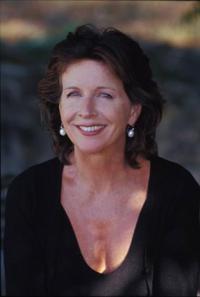Though it’s a novel, Galway Bay is based on the life of my great-great-grandmother, a story I only discovered after years of research. I didn’t even know her name on that October morning in 1979 when my dad and I walked into the office of the Galway City Clerk—two more Irish-Americans looking for their ancestors.
“My name is Michael Kelly,” my father said.
“We’ve a county full of Michael Kellys,” the man replied. Wasn’t Kelly the second most common name in Ireland, right there next to Murphy, and wasn’t Galway “Kelly Country”?
What details did we have about our Kellys? Townland? No. Parish? No. Dates? Only that our ancestors left Ireland in the 1840s or ’50s.
“Along with two million others,” the clerk said.
My dad raised his eyebrows at me. He’d been skeptical about “this whole roots thing” anyway. He was very proud of being Irish. We all were. But Ireland itself didn’t really come into it.
We were Chicago Irish with roots in Bridgeport. “The Cradle of Kings,” my dad only half-jokingly called the neighborhood that gave our city its mayors, beginning with his own cousin Ed Kelly, and continuing through Mayor Daley.
I’d been visiting Ireland off and on for 10 years and I was fascinated by the place. I longed to show him a country richer and more complex than the land he’d seen on a one-week tour with my mom and friends from Chicago. I planned to spend the fall studying in Ireland. Would he travel with me for the first two weeks? “Go on, Mike,” my mom said and surprising himself, he agreed.
We were having a great time. He enjoyed the landscape, the music, the people. My dad delighted in the conversation, enjoyed the turns of phrase and the humor that was so like his own. Though he did comment on the low voices, the guardedness. “A nation of conspirators,” he said.
But the tangible connection to “our Kellys” that I wanted seemed impossible. The town clerk shook his head, sad for us. The Diaspora. Cut off forever. But then he smiled. He held up a wonderful old-fashioned fountain pen.
“Pope John Paul II used this to sign our visitors book when he was here last week. Two hundred and eighty thousand went to the Mass he celebrated on the Galway Race Course.” Then the clerk raised the pen and used it to make a quick sign of the cross on my father’s forehead. A papal blessing once-removed.
Then he handed my dad the pen. “Here. Now you sign your name in the book.” So there on the page facing the pope’s signature, my father wrote: Michael J. Kelly, Chicago, Illinois, USA.
“There,” the clerk said. “You are entered on the official rolls of the county of your ancestors. Welcome home.”
The men shook hands. Perfect.
My dad had always been impatient with details. “Summarize,” he’d say to my sisters and brother and me when we’d start rambling through some story. Get to the point. And now he had. He had reconnected to the 2,000-year history of the Kellys in Ireland. Officially. Done.
We continued our trip, driving along Galway Bay and through Connemara. Somehow we felt less like tourists.
For me the search had only begun. I went back to the U.S. and did my homework, cranking through microfilm census rolls, calling relatives I didn’t know, hunting for death certificates, checking cemetery records. Anyone who does genealogy knows what it’s like—two steps forward, one step back. Right name, possible date—oops, not related. And then the joy when our ancestors emerge. I searched libraries in the U.S. and Ireland, and then the Irish computerized their church records, and the floodgates opened.
Genealogy is called a hobby, but that word can’t convey how soul-sustaining the information gathered can be. All of our ancestors endured so much—war, famine, pogroms, genocide, the middle passage, slavery. Yet they survived, because here we are. Our lives are their victory.
“Thank you,” I said to Honora Keeley Kelly when I stood where she’d been born in 1822, in the village of Bearna/Freeport, right on the shores of Galway Bay.
I wish my dad were still alive to read Galway Bay. He’d say that there are a lot of pages. But I’d assure him it moves fast. I didn’t cover all 2,000 years. I summarized.
Galway Bay, the story of one family’s Irish American experience, is the second novel by Mary Pat Kelly, a former television producer who has written several nonfiction books. She lives in New York.













